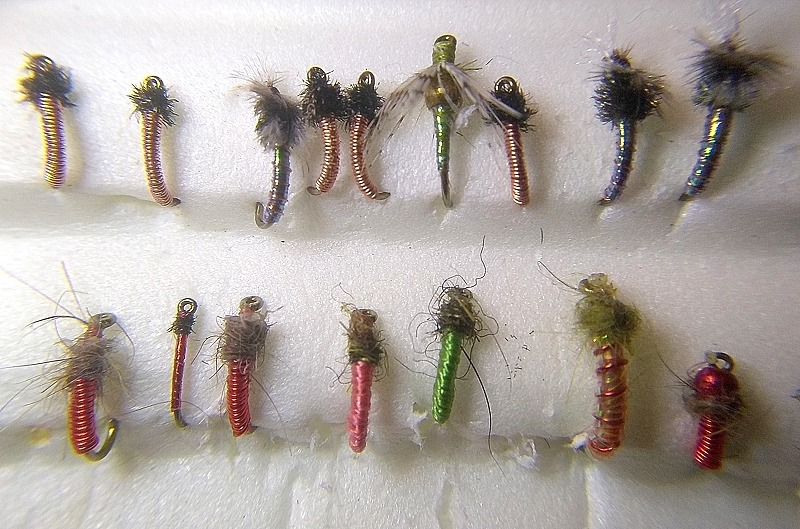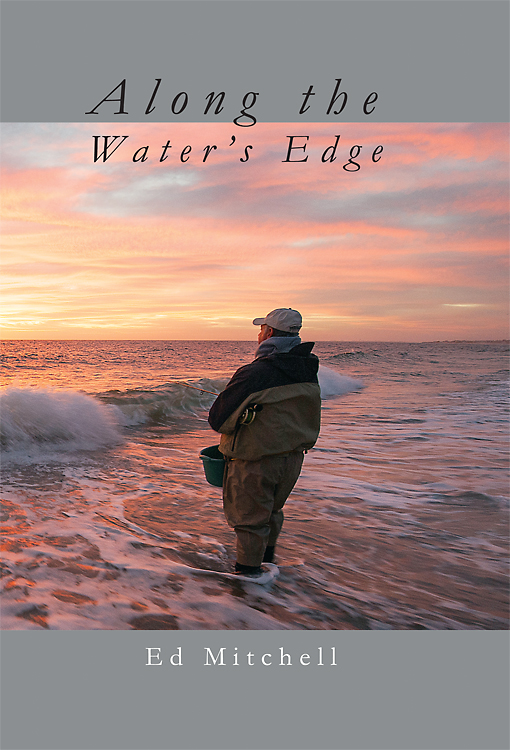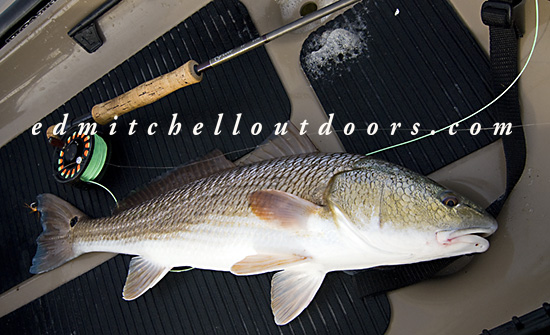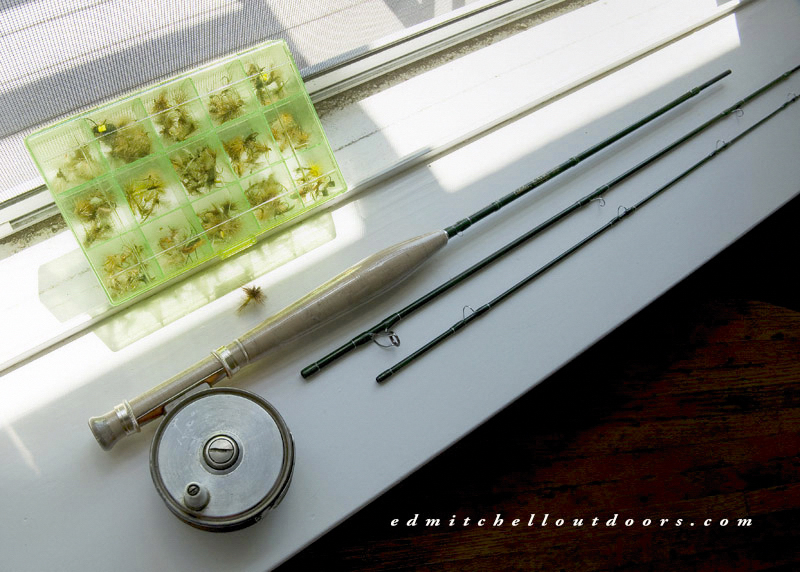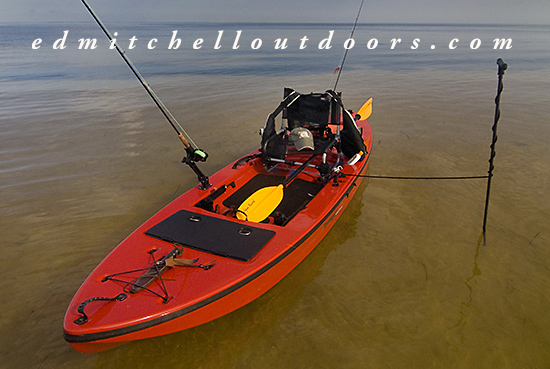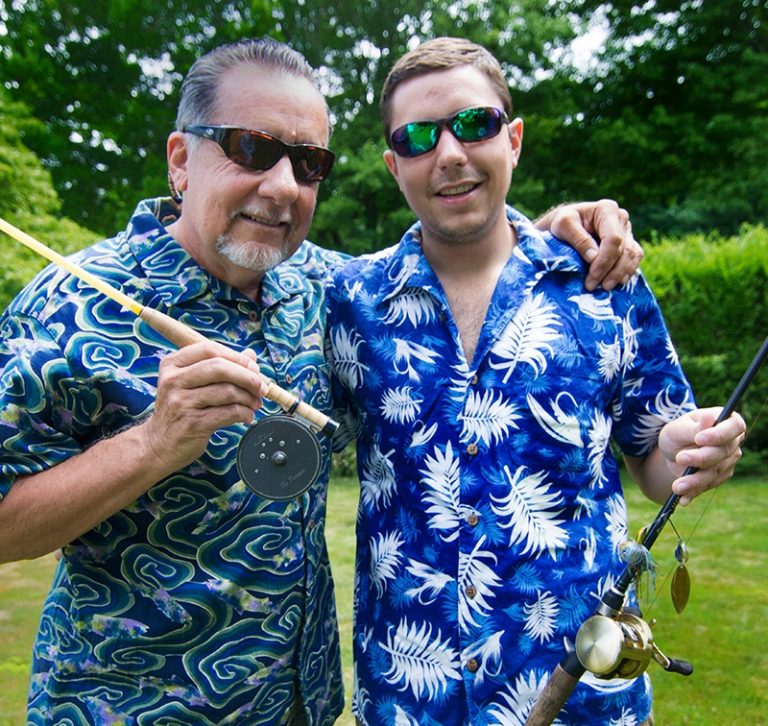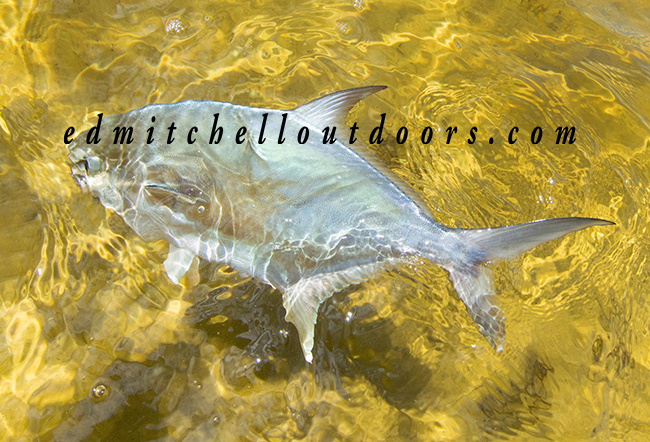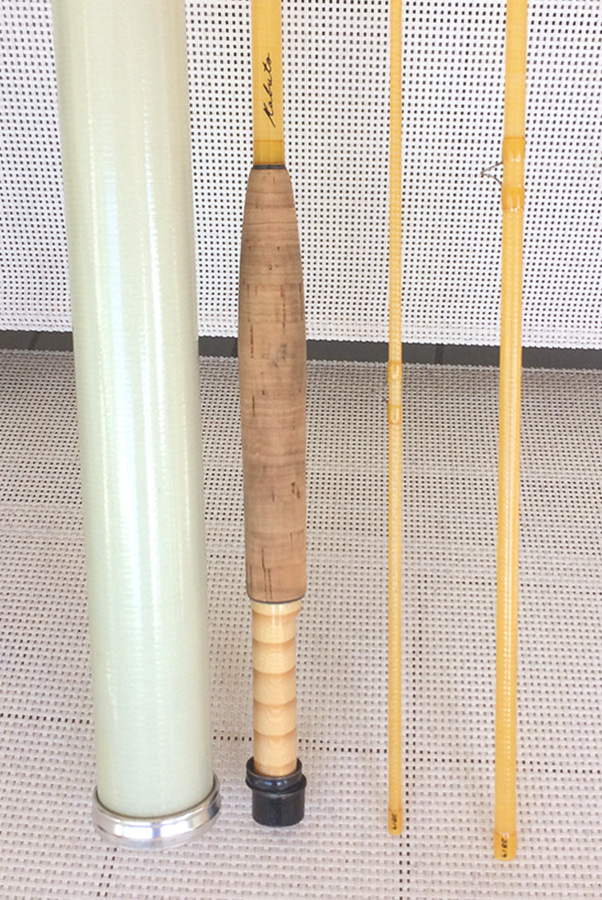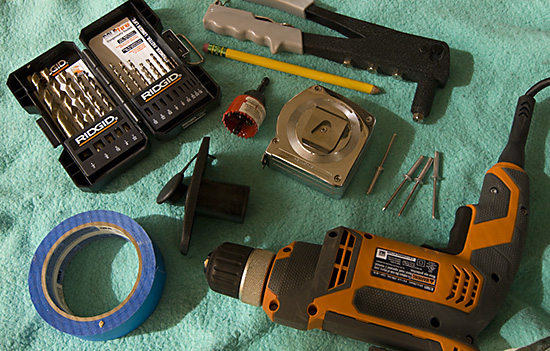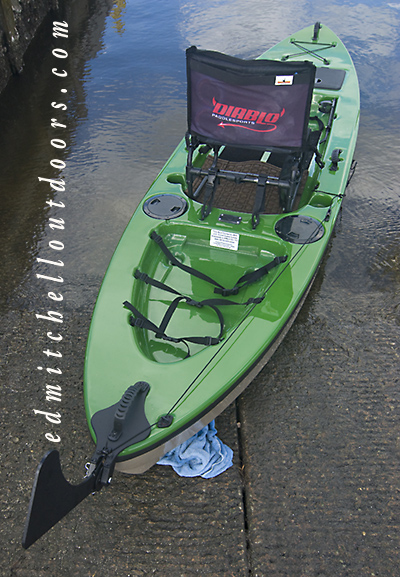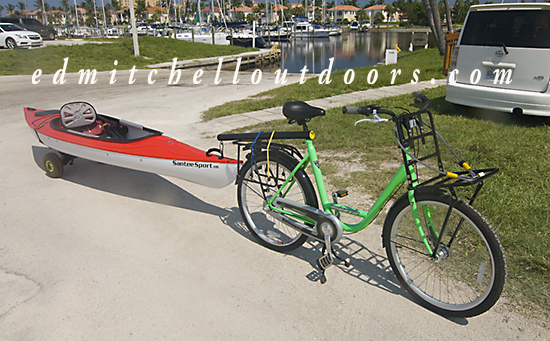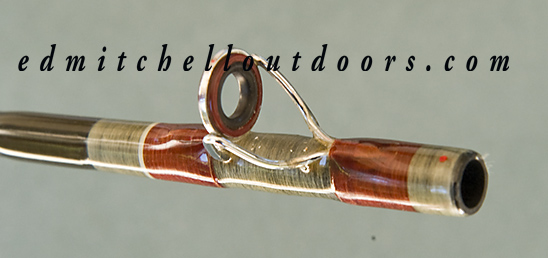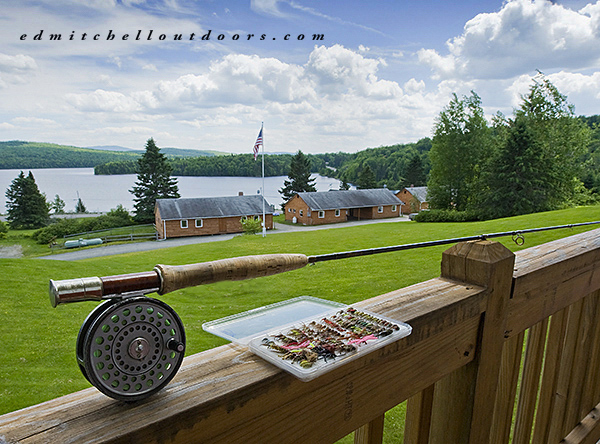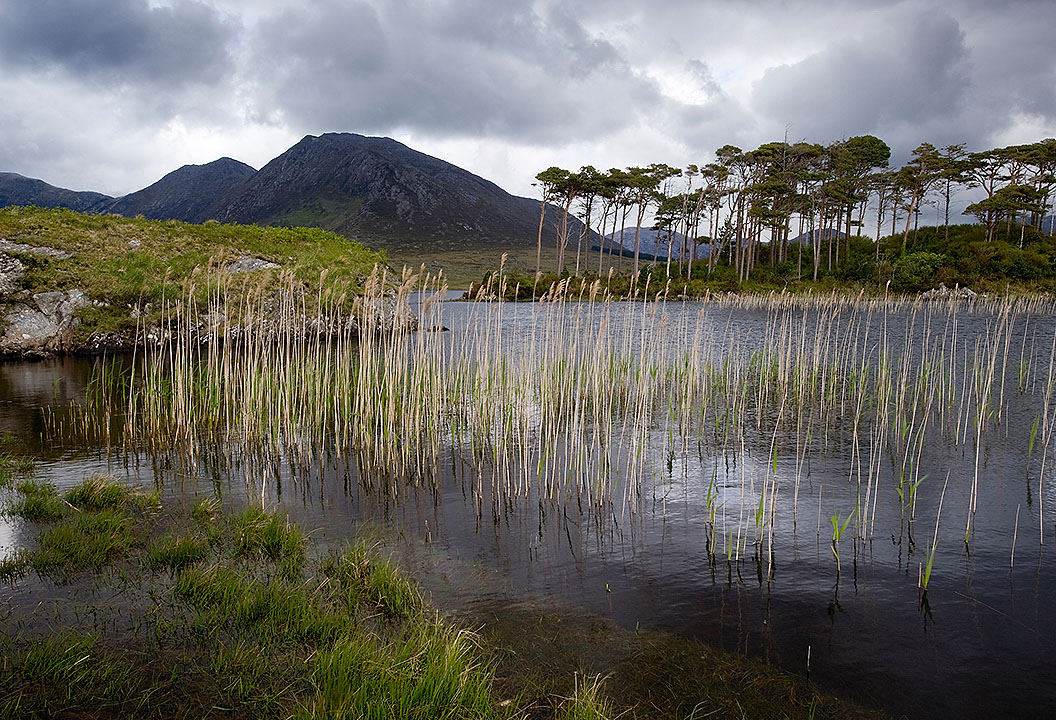Clouser Deep Minnows are an essential part of your saltwater fly box. Hell, they ought to be in your freshwater box too. Typically, they are tied on either standard length or 1x long hooks. The weight of the dumbbell eye should be adjusted to your needs. In the market place you’ll find them from 1/60 oz to about 1/10 oz. Here in the Northeast salt, on a 1/0 hook a 1/30 oz dumbbell might be right for fishing shallower places where you want a softer landing. While in deeper, or fast-moving water, a heavier eye (1/20 oz) is more appropriate.
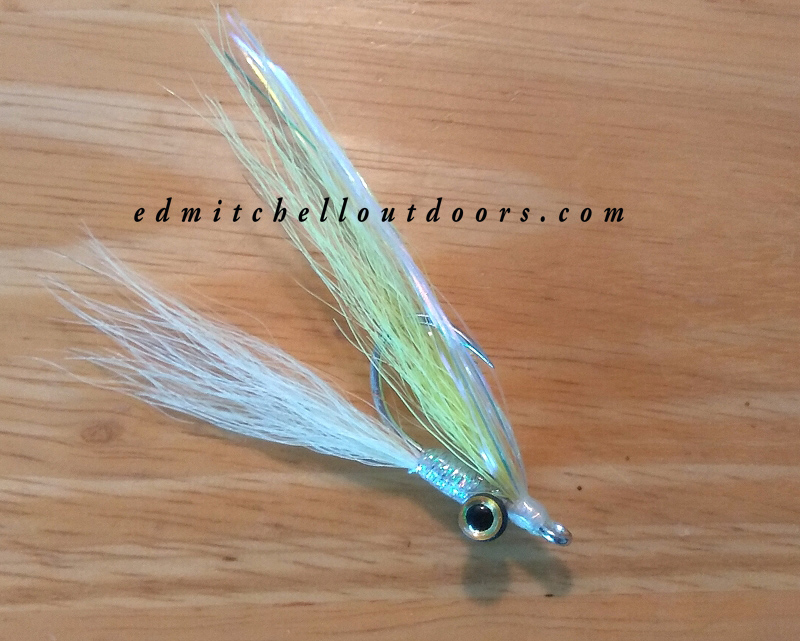
Finished 1/0 Clouser
We tied a few smaller ones awhile back; ready to do a bigger one? Okay, lets go. I’m not going to adhere strictly to the original pattern, but I’ll warn you where I vary. (Hope Bob isn’t watching) And with limited materials on hand in a pandemic, I’m going use up what’s here. For instance, I do not have any painted or plated large dumbbells. Hence, I’m using a plain lead one. (I glued decal eyes on later.)

Place the hook in the vise and cover the shank with a layer of thread. The dumbbell is going to be attached on top of the hook, 1/3 of the way back from the hook eye. On a standard length 1/0 hook, that would midway between 1/8 and ¼ of an inch back. As you seen in the photo above, I have used a marker to designate the correct location. Some tiers create a small bump of thread right at this spot.
Lean the dumbbell against the side of the hook. Make 5 simple cross wraps in one direction. Straighten the dumbbell on the shank and make 5 simple wraps in the other direction. Now we get serious. Level the dumbbell perfectly. I mean it. Look at it from several directions to be sure. Make at least 10 very tight figure-eight wraps around the dumbbell’s waist, followed by at least 12 very tight circular laps under the dumbbell. These circular wraps are essential to choke-down the figure eight wraps. Believe me they’re key. Once the dumbbell is firmly in place and level, add a drop of super glue top and bottom.


Now we tied in the tail. Most often, bucktail is used. (you can substitute other materials) The best stuff is from the upper third of the tail. The hair farther down is hollow and flares when tied in. But I admit in a jam I’ll use it. Hey you gotta do what you gotta do. Cut a clump 1.5 times the shank length and tied in on top of the shank both before and after the dumbbell. Trim at the eye if necessary. Then lash the tail down the entire shank. I start the tail behind the dumbbell only; it doesn’t extend forward to the hook eye. And overall my tail extends more to the rear. Your choice.
Along with the tail, I tie in a length of Bill’s Bodi Braid. Why? This stuff nicely imitates the silver belly seen on most forage fish. I use it often. The braid gets wrapped forward to the dumbbell and I coat it with clear UV acrylic. Your option. At this point, you’re ready to tie in a wing. I start mine behind the dumbbell. (Note the original pattern has you start in front of the dumbbell.) Roll the hook over in the vise. It will make life easier. Lash the wing down tightly and trim as needed. A drop of super glue isn’t a bad idea. The wing should be about the same length as the tail, although here again I often make mine longer. Add some flash on top of the wing and presto you’re done.
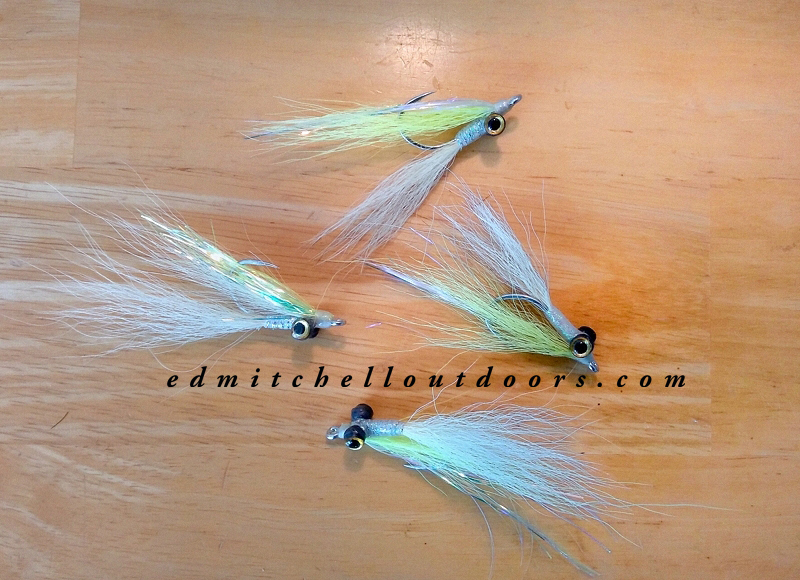
Clouser Cluster
Warning: I do not recommend Clouser Deep Minnows to novice casters. (Hell for that matter I don’t recommend a weighted nymph rig to novice casters either.) Honestly, its a ticket to trouble. On windy days or in a tight space such as a boat, even experienced casters can have problems with weighted flies. That dumbbell is probably traveling upwards of a 100 mph during the cast. At those speeds it becomes a bullet. You don’t want to hit yourself or someone else. (Your captain doesn’t you to hit the boat either.) And if you smack your rod, its likely to damage the blank and cause it to break down the road.
Note Those lead dumbbells were looking a bit funky. So I super glued on a decal eye. If you attempt this, first take your hook file and flatten the face of the dumbbell. All head wraps are coated with clear UV acrylic.





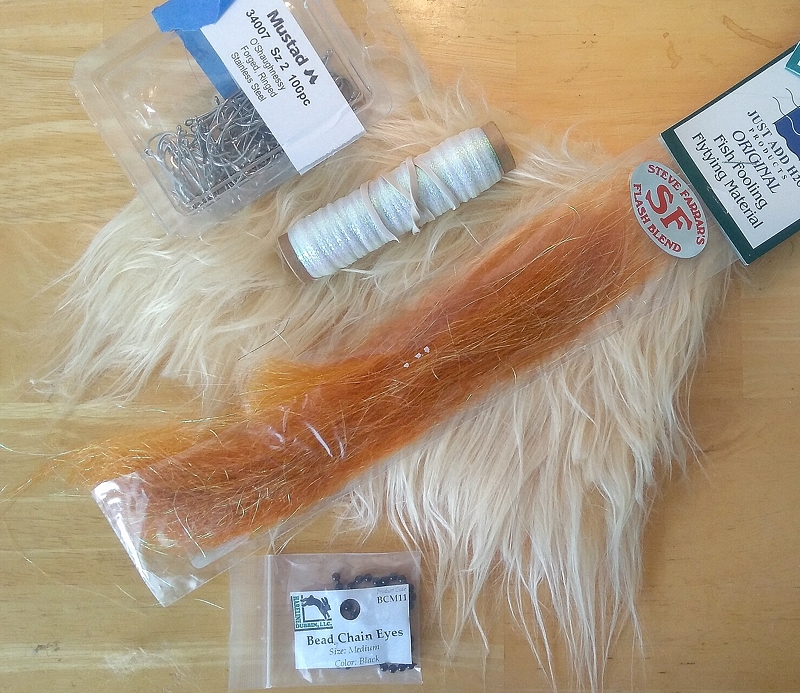
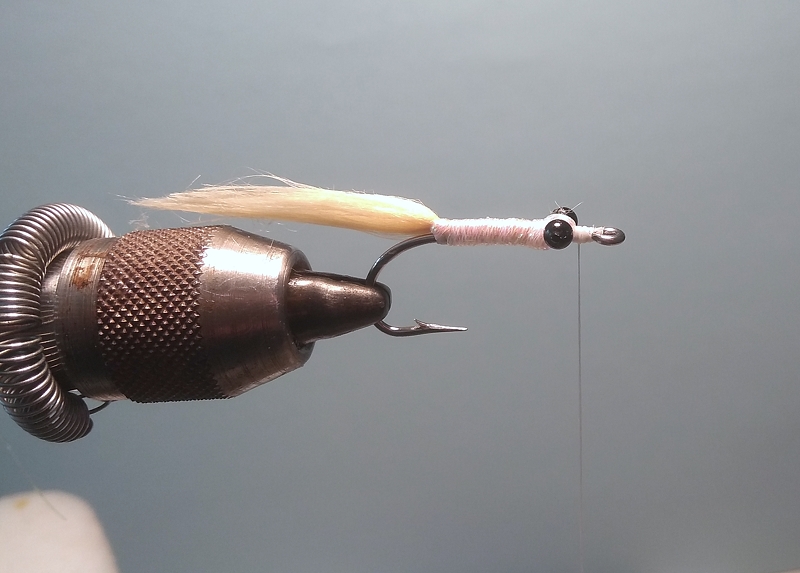
 At this point I’ll coat the Braid with clear UV Acrylic’, but that is optional. Next tie in a wing of Steve Farrar Blend. Why this camel color?Are we trying to attract dromedary? Na. One of the key elements of a good bay anchovy fly is the color orange or copper. (see pix at the top of the page) This camel color Blend has both, plus some flash built in. It matches the bait well.
At this point I’ll coat the Braid with clear UV Acrylic’, but that is optional. Next tie in a wing of Steve Farrar Blend. Why this camel color?Are we trying to attract dromedary? Na. One of the key elements of a good bay anchovy fly is the color orange or copper. (see pix at the top of the page) This camel color Blend has both, plus some flash built in. It matches the bait well. Final thought. If you live farther south, say down in New Jersey, you’ll see the striped anchovy instead. It is a bit bigger and has a pronounced silver band down the lateral line, much like a silverside. Adjust your fly to match. Best of luck on the water!
Final thought. If you live farther south, say down in New Jersey, you’ll see the striped anchovy instead. It is a bit bigger and has a pronounced silver band down the lateral line, much like a silverside. Adjust your fly to match. Best of luck on the water! 








